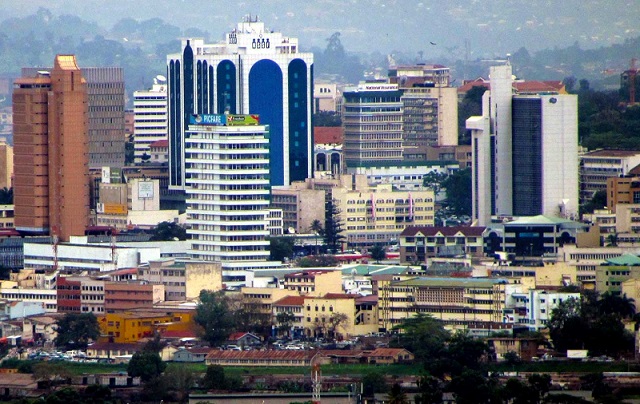
Cities are increasingly vulnerable to the devastating health impacts of climate change
ANALYSIS | DR. NAVEEN RAO | As climate change intensifies, cities remain dangerously unprepared for its health impacts. From New York City to Nairobi, Berlin to Bangalore, climate change is unmistakably affecting our health. Extreme weather events and rising temperatures are not just inconvenient — they’re deadly.
Each year, extreme heat alone claims nearly half a million lives, while severe weather patterns are driving outbreaks of diseases such as malaria, cholera, and dengue fever, and polluted air increases respiratory diseases, cancer, and dementia worldwide. This summer was the hottest on record.
In the face of this daunting challenge, cities — home to more than half of the world’s population — are uniquely positioned to lead the charge against climate-related health risks. Dense populations, concrete landscapes, and limited green space make the air hotter and dirtier and offer more opportunities for the spread of disease.
Cities such as New Delhi and Ouagadougou in Burkina Faso are experiencing unprecedented heat waves, while Dhaka, Miami, and Dubai face more frequent and severe flooding. Rio de Janeiro and Ho Chi Minh City have seen increased cases of dengue fever due to expanding mosquito habitats.
Despite some progress, less than one-third of cities have integrated health considerations into their climate disaster plans, according to new data from the Urban Pulse Survey conducted by Resilient Cities Network and Yale University. To close this gap, city leaders must adopt a three-step plan that links health and weather data, fosters cross-sector collaboration, and prioritizes funding for future climate-related health risks.
1. Link health and weather data
The integration of health and weather data is crucial for city planning. Cities must create systems that use weather forecasting to predict and prepare for health risks.
For example, in Rio de Janeiro, the mayor’s office has spearheaded a successful dengue forecasting initiative, enabling early predictions of disease hot spots. This proactive strategy resulted in timely notifications and resource deployment, ultimately leading to the lowest death rate in recent dengue epidemics.
Cities must build on such successes by ensuring data from meteorological and health departments work together to identify vulnerable populations and prioritize interventions.
2. Foster cross-sector collaboration
Collaboration across sectors — health, climate, urban planning, and community engagement — is essential to mitigate climate-related health impacts. In Dhaka, a multisectoral Early Action Protocol for heat waves has demonstrated how leveraging heat forecasting and detailed vulnerability data can save lives. The protocol’s impact is so significant that scaling it to other countries could potentially save nearly 100,000 lives annually, according to the World Health Organization and World Meteorological Organization.
Cities worldwide must adopt similar multisectoral frameworks to ensure that all key stakeholders are involved in building climate-resilient health systems.
3. Prioritize funding for future climate-related health risks
Effective climate adaptation is impossible without adequate financing, yet less than 6% of adaptation funding and just 0.5% of multilateral climate funding go toward health programs, according to WHO. This financial gap leaves cities ill-equipped to handle the health effects of climate change.
In Lusaka, Zambia, El Niño-induced drought and floods have contributed to a cholera outbreak, along with other extreme weather events that have affected the region, underscoring the need for investment in both immediate solutions and long-term resilience. By increasing dialogue, vaccination efforts, and community engagement, Lusaka successfully reduced cholera deaths. However, such progress is difficult to sustain without consistent and expanded funding.
These cities and many others need to plan more aggressively for the health threats posed by climate change, and climate finance needs to keep up. The current funding gap highlights the urgent need for comprehensive reform of global financing frameworks to better integrate climate and health in agendas.
At the COP 28 U.N. climate summit, the launch of the Guiding Principles for Financing Climate and Health Solutions marked a significant step forward. These principles, endorsed by The Rockefeller Foundation and over 50 other stakeholders, aim to increase the flow of climate finance directed at health projects. They reflect a growing recognition of the need for collaboration across the traditionally siloed sectors of climate, health, and development.
By linking health and weather data, fostering cross-sector collaboration, and securing the funding needed to face future risks, cities can turn the tide. If cities act now, they can set the standard for resilience. If they can make it here — on the urban battlegrounds of climate and health — they can make it anywhere.
****

Dr. Naveen Rao is the senior vice president of the health initiative at The Rockefeller Foundation where he leads the foundation’s efforts to shape the field of climate and health.
 The Independent Uganda: You get the Truth we Pay the Price
The Independent Uganda: You get the Truth we Pay the Price



